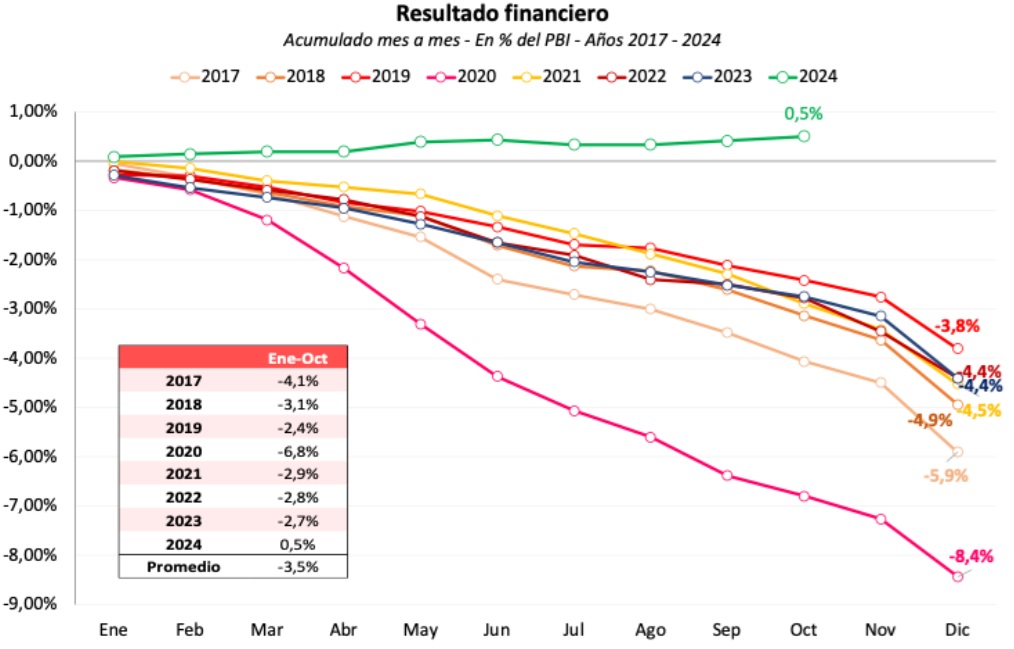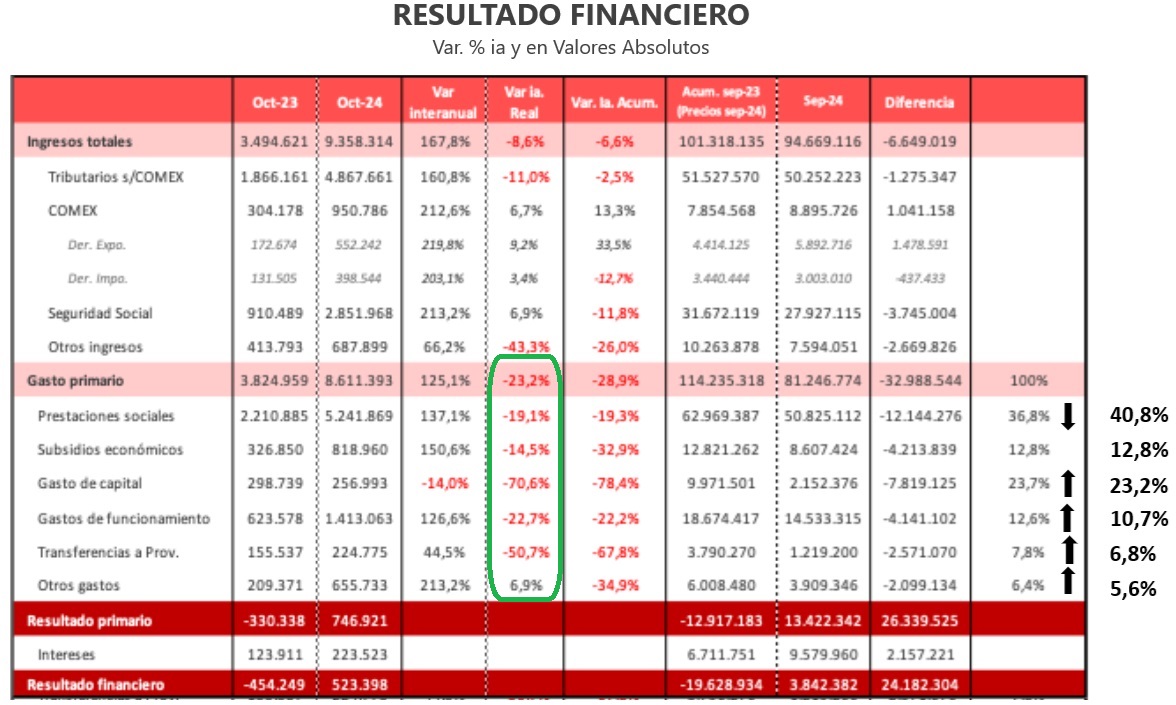In Part I of this series about Javier Milei, I shared some IMF data showing a big decline in the overall burden of government in Argentina.
I focused on overall spending (national, provincial, and local) for two reasons.
- That’s the only data I had in English (my ability to navigate Spanish-language websites is even weaker than Thomas Piketty’s understanding of economics).
- I wanted to make sure Milie’s progress was not merely a result of shifting spending to the provincial or local level.
Today’s column will look specifically at central government fiscal policy because I got a great briefing yesterday from Ivan Cachanosky, an Argentinian economist.
Here are two of the charts he shared, starting with a comparison of 2024’s fiscal surplus to the routine deficits of the prior seven years. The chart is in Spanish, but I assume it is self-explanatory.
Since the most important fiscal variable is the overall burden of government spending, I normally don’t fixate on whether there is a budget surplus or budget deficit.
But Argentina has periodically suffered fiscal crises and received numerous IMF bailouts, so it is a country where it is very important to achieve fiscal balance.
But what makes Milei so impressive is how he achieved a balanced budget.
Here’s a second chart. It’s not self-explanatory, but look at the bottom portion of the “Var ia. Real” column. That shows the inflation-adjusted change in different categories of government spending between 2023 and 2024.
As you can see, Milei has taken a chainsaw to the central government’s budget.
The bottom line is Argentina’s fiscal progress is entirely the result of Milei’s aggressive and successful effort to shrink the central government’s budget.
My fantasy is that the newly empowered Republicans in Washington copy his approach. Heck, I’ll be happy if they can even do 1/10th of what Milei has accomplished (and the GOP has overseen some decent periods of spending restraint in my lifetime, so there is a tiny bit of hope).


No comments:
Post a Comment